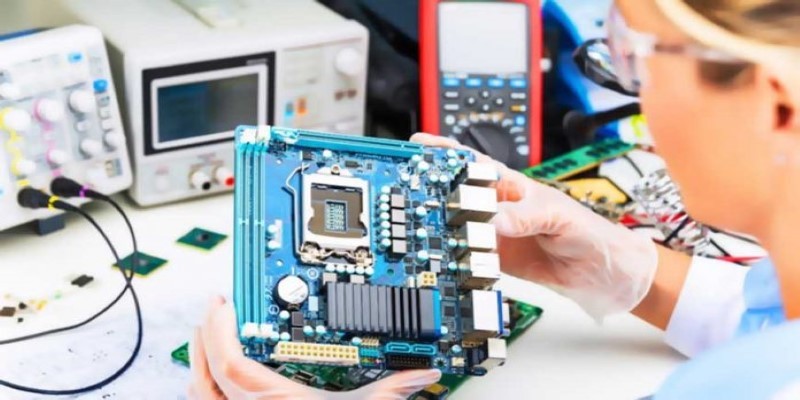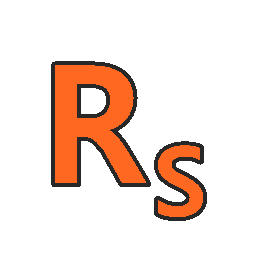
About Course
Basic Electronics
Basic Electronics course is a comprehensive introduction to electronic devices and circuits. It is designed to provide students with the fundamentals of electronic components, circuits, and systems. The course covers topics such as semiconductor devices, basic electronic components, diodes, transistors, and amplifiers. It also includes topics like AC and DC circuits, filters, oscillators, and digital electronics. The course begins by introducing students to the basics of electricity, such as Ohm’s Law, Kirchhoff’s circuits laws, and basic circuit concepts.
This is followed by a discussion of the characteristics of capacitors, inductors, and resistors. Students then learn about the operation of diodes, transistors, and amplifiers. The course then covers the fundamentals of AC and DC circuits, such as AC and DC power supplies, AC and DC amplifiers, and AC and DC filters. The course then moves on to digital electronics, including topics such as Boolean algebra, logic gates, and combinational logic. Digital electronics circuit design topics, such as flip-flops and counters, are also discussed. The course also covers topics such as oscillators, power supplies, and power amplifiers. At the end of the Basic Electronics course, students will have a good understanding of electronic components and circuits, as well as the ability to design, build, and troubleshoot electronic devices. They will gain an understanding of the principles of operation of transistors, diodes, and amplifiers. They will also gain an understanding of digital electronics, and be able to design, build, and troubleshoot digital circuits.
By taking this course, students will gain a better understanding of the fundamentals of electronics, which will help them in their future engineering studies. They will gain an understanding of the principles of operation of transistors, diodes, and amplifiers. They will also gain an understanding of digital electronics, and be able to design, build, and troubleshoot digital circuits. This course is an excellent starting point for those interested in pursuing a career in electronics engineering.
In today”s world most consumer appliances are based on electronics circuits and devices. The foundation for the working of a computer or any of its peripheral is based on electronics. This course has been designed to develop skills to understand and test simple electronic components and circuits. After studying this course students will develop an insight to identify, build and troubleshoot simple electronic circuits.
Electronics is the science of how to control electric energy, in which the electrons have a fundamental role. It also deals with electrical circuits that involve active electrical components such as transistors, diodes and integrated circuits, and associated passive electrical components and interconnection technologies
An integrated circuit, is another name for a chip, is a small electronic device made out of semiconductor material. Integrated circuits are used for a variety of devices, including microprocessors, audio and video equipment, automobiles, and other home appliances.
You will work with several basic electronic components when building electronic circuits, including resistors, capacitors, diodes, transistors, and integrated circuits. Here is a brief overview of the functions of each of these Basic Electronics components.
Who this Basic Electronics course is for:
- students who want to know about basic of Electronics
- Beginners who want to know about electronic components
Course Content
Basic Electronics
-
Classification of Materials based on conductivity, #Conductor, #Semiconductor, #Insulator
00:00 -
Semiconductor Material, Structure of Semiconductor, Types of Semiconductor, Basics of Semiconductor
00:00 -
PN Junction in Equilibrium with zero bias Voltage, #ZeroBiasCondition, #PNJunctionDiode
00:00 -
PN Junction Parameters under zero bias condition, #PNJunctionParameters, #ZeroBiasCondition
00:00 -
PN Junction Depletion width derivation, #DepletionWidth, #PNJunctionDepletionWidth
00:00 -
Example on PN Junction Parameters with zero bias condition, #PNJunctionParameters #ZeroBiasCondition
00:00 -
Use of Function Generator and Waveform on Oscilloscope CRO in Multisim, #Multisim, #BasicElectronics
00:00 -
VI Characteristics of PN Junction Diode in Multisim, #Mutisim, #BasicElectronics
00:00 -
Zener Diode Characteristics and Zener Diode as Voltage Regulator in Multisim, #BasicElectronics
00:00 -
Halfwave Rectifier with and without Filter in Multisim, #Mutisim, #BasicElectronics
00:00 -
Full wave Rectifier with and without filter in Multisim, #Mutisim, #BasicElectronics
00:00 -
Full wave Bridge Rectifier with and without Filter in Multisim, #Mutisim, #BasicElectronics
00:00 -
AND Gate and OR Gate using diode in Multisim, #Mutisim, #BasicElectronics
00:00 -
Logic Gates – AND Gate, NAND Gate, OR Gate, NOR Gate, XOR Gate, XNOR Gate & NOT Gate in Multisim
00:00 -
Clipper Circuit, Positive Clipper, Negative Clipper in Multisim, #Mutisim, #BasicElectronics
00:00 -
Common Emitter Characteristics of NPN Transistor in Multisim, #Mutisim, #BasicElectronicsn
00:00 -
Frequency Response of Common Emitter BJT Amplifier in Multisim, BJT Amplifier, BJT Amplifier Circuit
00:00 -
FET characteristics in Multisim, Field Effect Transistor Characteristics, Field Effect Transistor
00:00
Student Ratings & Reviews

